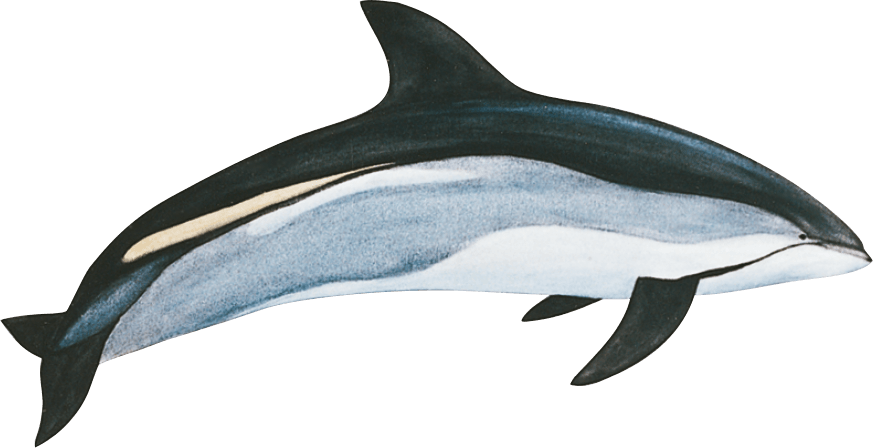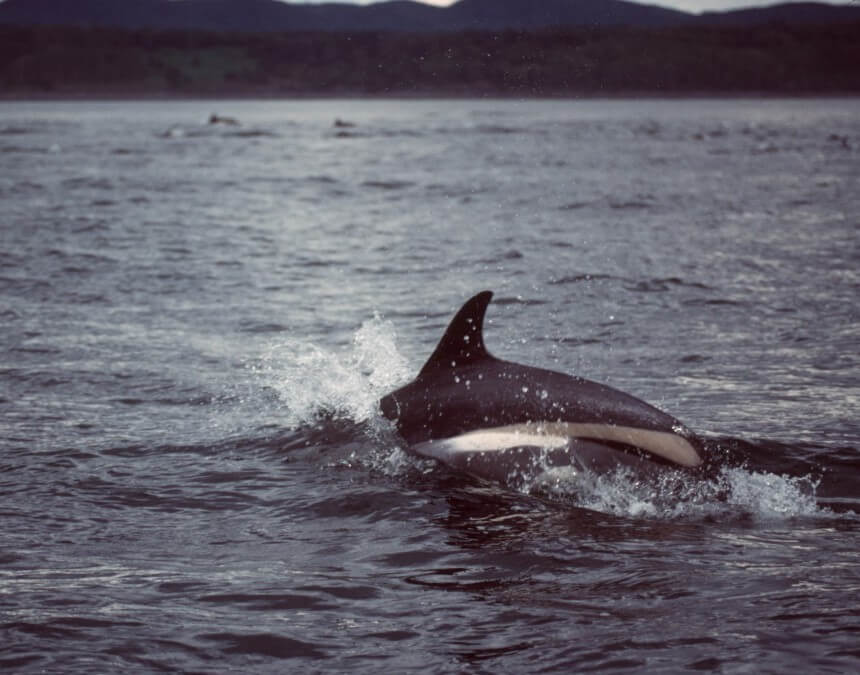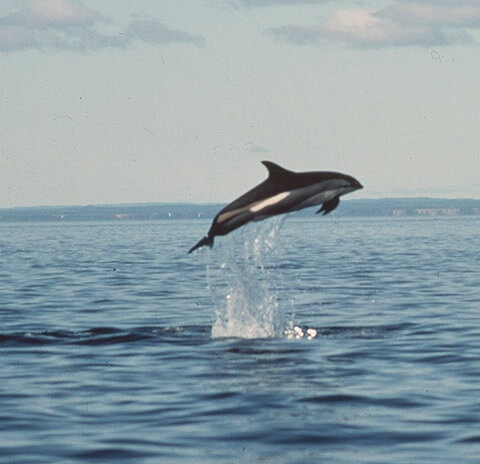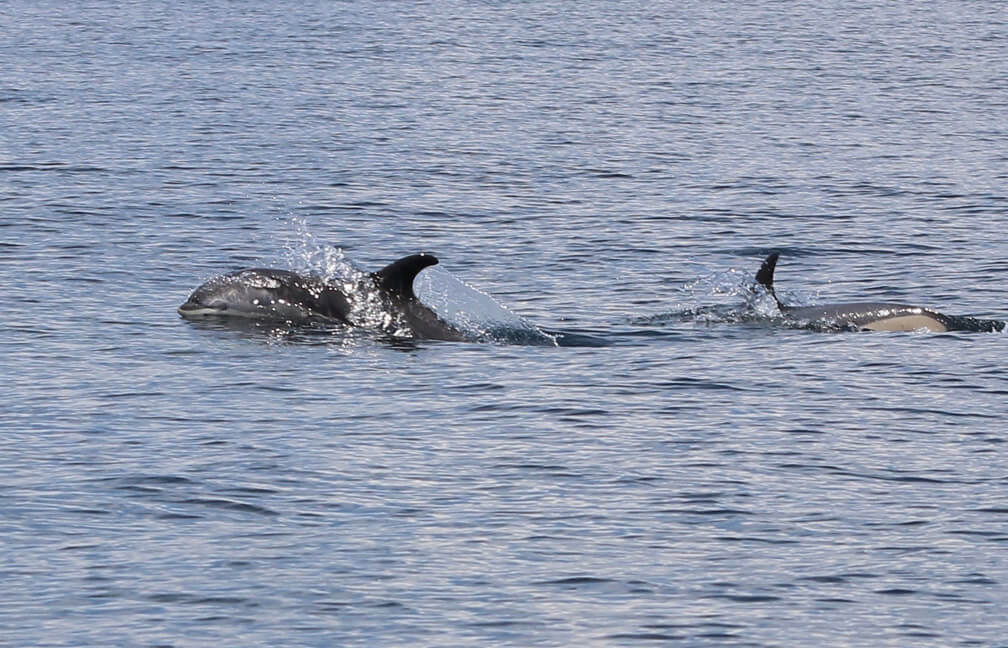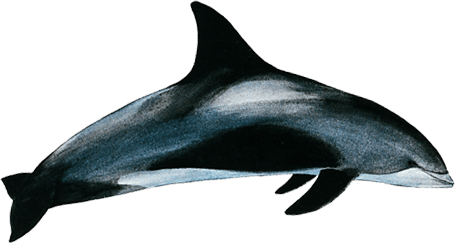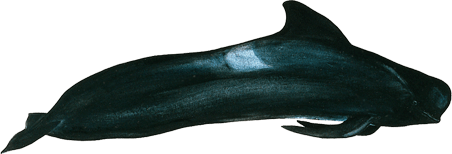Feeding
They feed primarily on small pelagic fish, squid and occasionally small benthic crustaceans. Near the surface, they show cooperation behaviour to encircle their prey and capture them. When feeding, these dolphins are often associated with fin and humpback whales.
On the surface
Dolphins are fast swimmers and can attain speeds of between 25 and 45 km/h. Their swimming is both energetic and spectacular. They come to the surface to breath every 10-15 seconds. They leap and spin out of the water and land noisily on the surface; in terms of aerial acrobatics, the white-beaked dolphin is less exuberant. They sometimes swim in the bow waves or wake of passing boats. They can even be seen harassing larger whales to swim faster and thereby create a wave that they can ride.
Diving
Their diving habits are poorly known, but their prey are generally located within 100 m of the surface.
Social
These two gregarious species live in groups ranging from 3 to 50 or so individuals, which in turn make up larger herds containing several hundred or even several thousand animals. White-sided dolphins can swim in very tight formations, practically touching one another. In the case of the white-beaked dolphin, segregation is practised within the pods, with juveniles forming separate groups from those of adults and their calves.
Vocalization
The vocal repertory of these two species is not known. It is assumed that, like other odontocetes, they emit high-frequency sounds to navigate and detect their prey (echolocation) as well as lower-frequency sounds.


